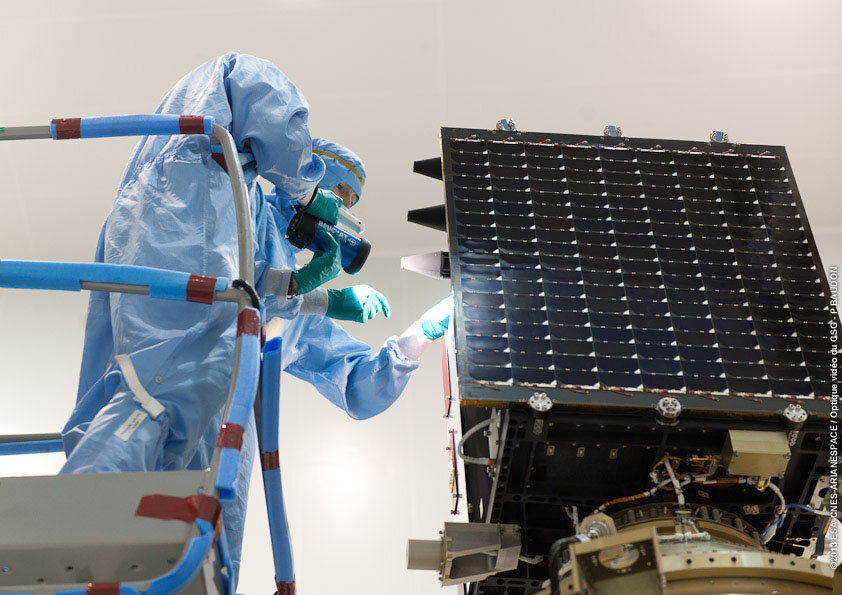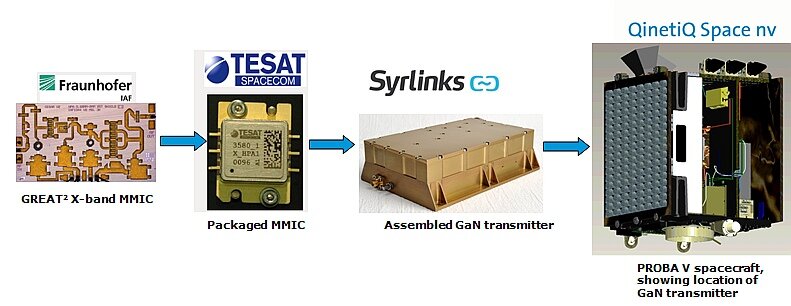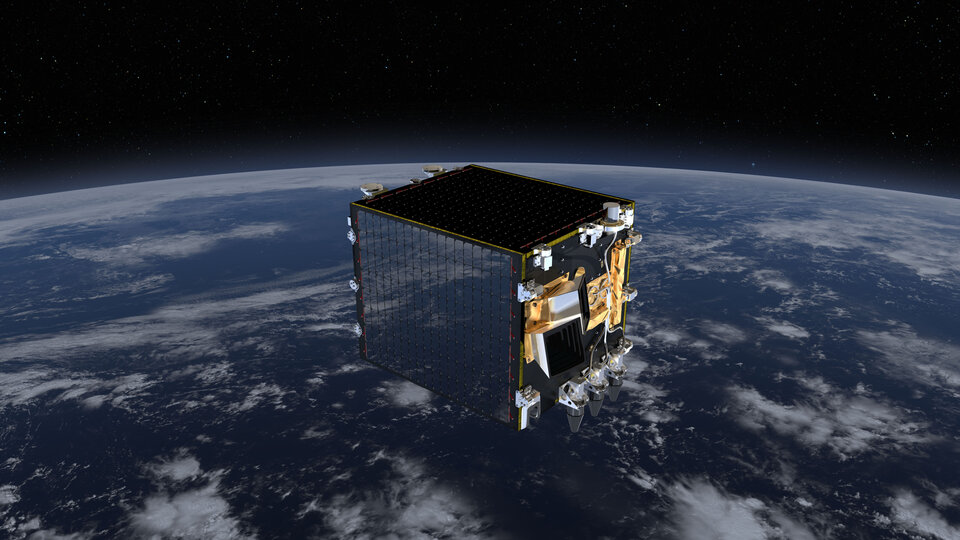Proba-V debuts new semiconductor technology for space
When the Proba-V minisatellite is launched into orbit tonight it will become Europe’s first space mission to use robust, high-power gallium nitride technology – hailed as the most promising semiconductor since silicon.
While its main task is Earth observation – carrying a redesigned Vegetation imager previously used on France’s Spot satellites for global vegetation monitoring – Proba-V also carries a number of guest payloads, giving new technologies an early chance to be tested in space.
This includes an added gallium nitride (GaN) amplifier within the X-band communication system for downlinking images to Earth.
“Gallium nitride has the potential to revolutionise communication in space,” explains ESA’s Andrew Barnes, overseeing this technology demonstration payload.

“We expect signal strength and data transmission to improve five- to ten-fold, and are eagerly awaiting the results of this first practical test in space.”
Most people will have seen gallium nitride in use without realising it. GaN is widely employed as an energy-efficient light emitting diode, or LED. LEDs illuminate tourist attractions, such as London’s Buckingham Palace as well as car and aircraft interiors, and are increasingly embedded within camera flashes, mobile phones and torches.
The same physical properties that make gallium nitride a brilliant light source when electricity is passed through it also make it useful as a microwave semiconductor, capable of operating under much higher voltages and temperatures than previous materials.

The resulting integrated circuits are more compact, smaller and lighter, with the potential to replace electron tubes currently used for amplification. They will require much less in the way of active cooling systems to operate, and have the capability to operate in a wide range of frequencies suitable for communication, radar and imaging applications at 1–100 GHz.
Attractively for space, GaN semiconductors are also inherently radiation resistant with a lifetime measured in decades.
Realising their potential, ESA assembled a consortium of European companies and research institutions to develop a space-quality gallium nitride supply chain, called the GaN Reliabliity Enhancement and Technology Transfer Initiative (GREAT2).

GaN could in the future enable more efficient solar panels and satellite power converters, but to begin with the GREAT2 consortium has focused on communications systems.
Proba-V’s GaN Monolithic Microwave Integrated Circuit (MMIC) amplifier is an initial prototype, developed by the Fraunhofer Institute for Applied Solid State Physics in Freiburg, Germany, and then packaged for space by German company Tesat-Spacecom. The amplifier was then added to the X-band transmitter’s other two amplifiers by manufacturer Syrlinks in France.
Since this first prototype amplifier was delivered to the Proba-V team, GREAT2 has gone on to produce its first production run of amplifiers. These additional batches of MMICs have been fabricated by the industrial GaN foundry provider United Monolithic Semiconductors.
One of these MMICs in Proba-V’s qualification model – a working replica of the minisatellite, produced for engineering tests – at Syrlinks for testing on the ground in parallel with the prototype amplifier in space being put through its paces.

About Proba-V
Occupying less than a cubic metre, Proba-V is a miniaturised ESA satellite tasked with a full-scale mission: to map land cover and vegetation growth across the entire planet every two days.
Vital uses of Proba-V Vegetation data include day-by-day tracking of extreme weather, alerting authorities to crop failures, monitoring inland water resources and tracing the steady spread of deserts and deforestation.
Proba-V is the latest addition to the Proba family of small, low-cost space missions, giving flight experience to promising European technologies. So, along with hosting its main instrument, Proba-V also provides early test flights for a variety of advanced guest payloads.















 Germany
Germany
 Austria
Austria
 Belgium
Belgium
 Denmark
Denmark
 Spain
Spain
 Estonia
Estonia
 Finland
Finland
 France
France
 Greece
Greece
 Hungary
Hungary
 Ireland
Ireland
 Italy
Italy
 Luxembourg
Luxembourg
 Norway
Norway
 The Netherlands
The Netherlands
 Poland
Poland
 Portugal
Portugal
 Czechia
Czechia
 Romania
Romania
 United Kingdom
United Kingdom
 Slovenia
Slovenia
 Sweden
Sweden
 Switzerland
Switzerland





























